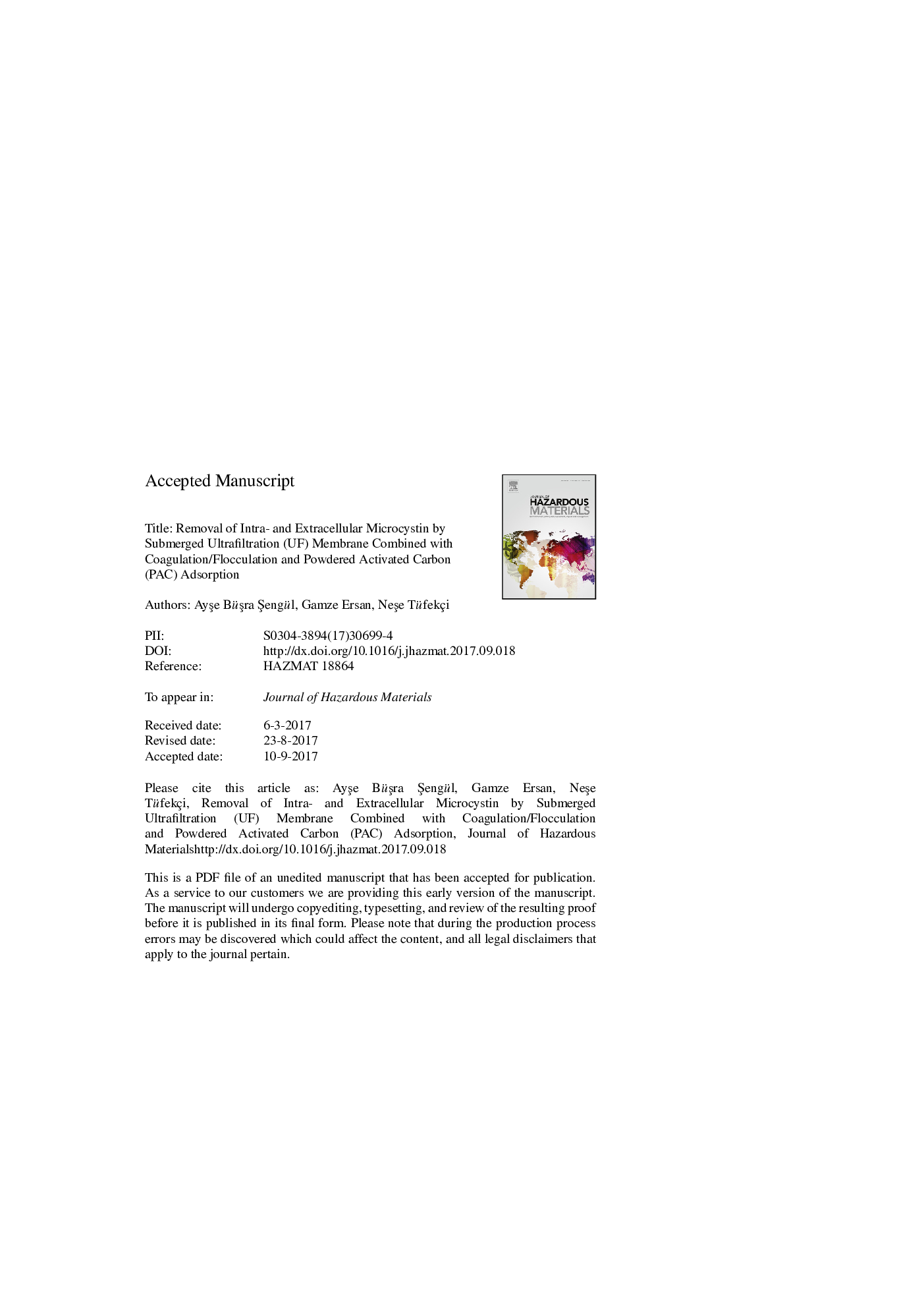| Article ID | Journal | Published Year | Pages | File Type |
|---|---|---|---|---|
| 4979145 | Journal of Hazardous Materials | 2018 | 32 Pages |
Abstract
In this study, we investigated the performance of conventional (coagulation/flocculation â powdered activated carbon [PAC] adsorption) and advanced treatment (coagulation/flocculation â PAC adsorption â submerged ultrafiltration [UF] membrane) processes separately and sequentially for the removal of total (intra- and extracellular) microcystin. Results of the conventional treatment process demonstrated that coagulation/flocculation alone was not effective (up to 70%) for the removal of total microcystin, while the uptake of total microcystin was achieved up to 84% by PAC adsorption (PAC dose of 20 mg/L). In addition, the adsorption kinetic mechanism of PAC was also examined using several kinetic models. Results showed that the pseudo-second order (PSOM) and Weber-Morris intraparticle diffusion model (IPDM) are the most suitable models for this study (r2 > 0.98 and p-values â¤0.05). On the other hand, up to 94% of microcystin was effectively removed when the coagulation/flocculation and PAC systems were combined with UF membranes. Also, the permeate concentration was found to be 0.3 mg/L, which is below the World Health Organization (WHO) guideline value of 1 μg/L. Overall results indicated that higher removal of microcystin occurred using the advanced treatment process. Therefore, this combined system appears to be a promising treatment technique for the removal of total microcystin.
Keywords
Related Topics
Physical Sciences and Engineering
Chemical Engineering
Chemical Health and Safety
Authors
AyÅe BüÅra Åengül, Gamze Ersan, NeÅe Tüfekçi,
